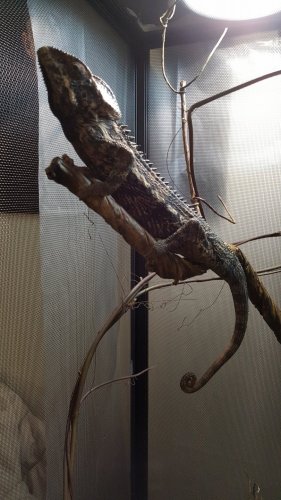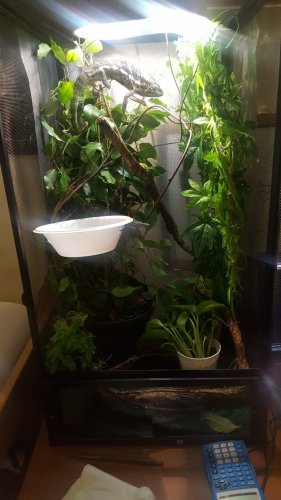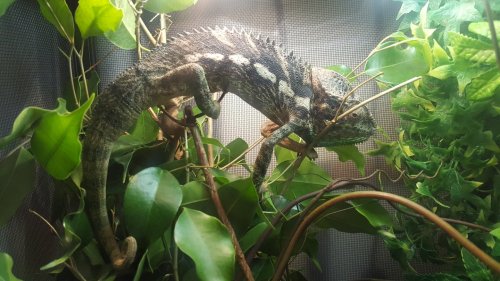philipjames11
New Member
Chameleon Info:
Cage Info:
- Your Chameleon - Giant Spiny Chameleon, got him from a reptile expo
- Handling - None to allow him to acclimate to new environment
- Feeding - Gut loaded supers. I leave 2 in a bowl for him in his enclosure for the whole day
- Supplements - Just calcium with D3.
- Watering - I mist him 3 to 4 times a day and he drinks consistently
- Fecal Description - Urates are solid white. The brown part of his excretion is getting less and less each day and is becoming watery (I think this is just because he hasn't eaten yet.
- History - Nothing crazy. However my cham goes into his feeding bowl and just sits in it without eating anything in it. the worms will crawl by him and even on his legs and he'd rather move away than eat them. He's very active however. He moves around all day, occasionally takes a short nap or rest.
Cage Info:
- Cage Type - Screen with 3 sides covered by shower curtains to allow for more humidity retention. 18x18x30
- Lighting - Both UVB and a regular bulb. I keep it on for about 13 hours a day
- Temperature - Slightly above 80 for the majority of the day. Goes down to the mid to high 70s at night
- Humidity - I don't have a way to measure humidity at the moment but I do mist regularly.
- Plants - I have a couple fake plants a a few real plants. The largest one is a ficus.
- Placement - My cage is in my dorm room right next to my desk. I leave the room quite a bit so he has his private time, but there is admittedly a large amount of time when I'm doing work sitting next to him
- Location - New York City




